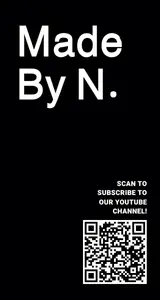First You Create The Work and Then the Work Creates You
This essay emerged from my attempt to write about Nietzsche's life, which will not be published soon. Rather, while exploring Nietzsche's life, a fascinating thought entered my mind. Examining Nietzsche's life is like trying to understand the man through a funnel, considering each book is a funnel—the person on the other side is different. It reminds me of the phrase Albert Einstein once said, "To punish me for my contempt for authority, fate made me an authority myself"—this is because he also remarked that "Blind belief in authority is the greatest enemy of truth."
In the beginning, we create works—essays, books, posts, and other content. These works are considered extensions of ourselves. To write a book, you must become the book. When studying Nietzsche's works, this concept becomes challenging. Nietzsche sometimes discusses the same point from different angles when comparing works like Thus Spoke Zarathustra and Beyond Good and Evil. He often takes seemingly opposite positions on the same issues.
If we consider Nietzsche the human as a source of conscious thoughts, and try to reconstruct him from his works—if we use each book as training data in a supercomputer—we end up with different models that have divergent opinions on the same topics. The more original and profound the author, the more difficult this reconstruction becomes. When we plot each author's image by backtracking through their books, we get different pictures. While there is some overlap, each image is distinct.
If we combine these images into one model—i.e., we take just the average—don’t we create a faux copy that doesn’t truly represent any of them? This average gives tepid answers to extreme questions and commonly accepted responses to ordinary questions. Yet, what have we done here? We've tried to recreate Nietzsche from his works because we believe his works are extensions of Nietzsche himself.
The image our imaginary supercomputer produces is nothing like the real Nietzsche. It’s just a matrix-vector interpretation of the man, falsely created through his works. We will never know Nietzsche; we will only have a false image of him through what he wrote.
When an author considers writing a book, he distills original thoughts that he has and creates a mental image of the thought and becomes the thought. The book is the written version of that image. Our supercomputer has created an image of a mental image the author has conceived while writing the work.
For some people, these images are consistent. The more original the thought, the sharper the image should be. But if a thinker is extremely original and deeply considers multiple perspectives, is it even possible to recreate an accurate image of the person?
How Does This Relate to Us?
As we go through life, each work we produce becomes a fragment of us. After we pass away, these pieces recreate an image of us—not who we truly were, but an image of someone who could have written that work.
Since humans change over time, it’s never truly possible to recreate an accurate image based on work alone. What we're creating is an image of an image—the persona the author wanted to project when writing that book.
What’s even more concerning is that with Nietzsche, his sister corrupted some of his works, and newspapers published false information about him. This becomes more commonplace. Over time, it becomes more difficult to separate truth from fiction. Fake news from 100 years ago may be considered true if it is not possible to disprove it completely.
This represents the real impact of fake news. Works not only created by the author but also those falsely attributed may be considered authentic. This further falsifies the image.
In a startup, the culture of truth-seeking—or facing reality—is closely aligned with success. In politics and certain media sectors, the opposite is true: the further from reality you are, the more likely you are to succeed.
There are natural incentives to create false works, thereby distorting the images we create in the present. For someone in the future trying to recreate images of today’s events, the picture they form may distort reality itself, creating a false reality that never existed.
This could be the actual impact of false news or false works—not only distorting the present, but also distorting the future by creating a false past.
Is There an Antidote?
Is there an antidote to all this? The antidote which can be envisaged is for each person to read deeply and think deeply while considering the multiple perspectives on each issue.
Yet this itself is a lifelong mission—who can dedicate to understanding reality?
A good metaphor may be found in the hard sciences. We cannot cheat nature. With the peer-reviewed system and the validity of each author based on the citations of his or her work, there is some safeguard.
While there are still bad actors, as it is written without emotions and just presents data, it gives a closer explanation of reality.
If we have a source of news that just provides data and presents news similar to science papers, we may be able to construct a better image of reality for the present—and for some future readers.
.png)




